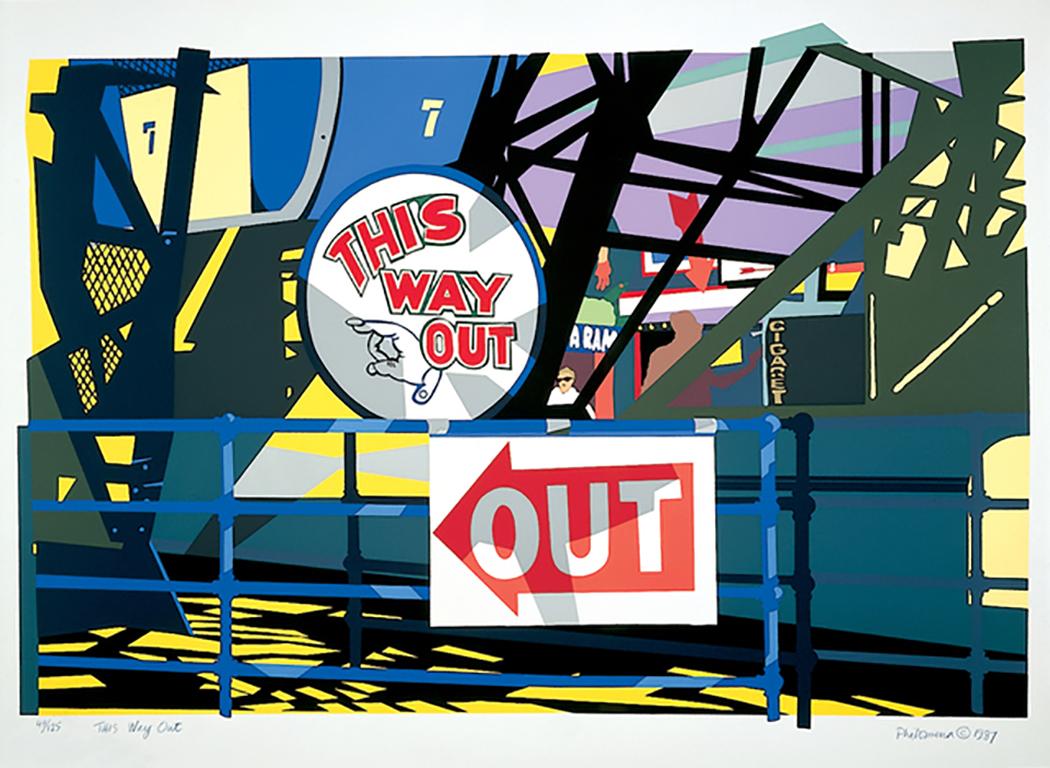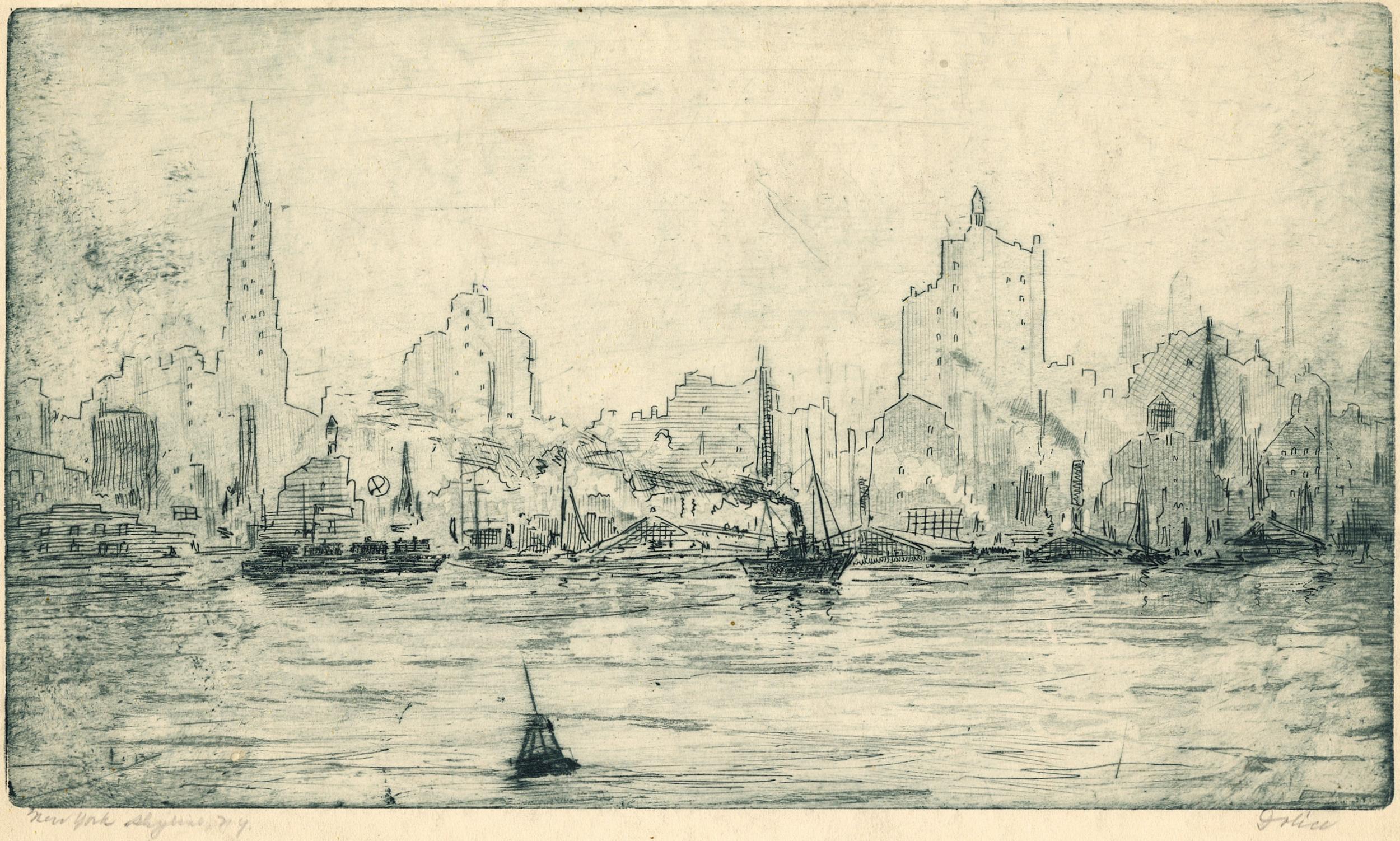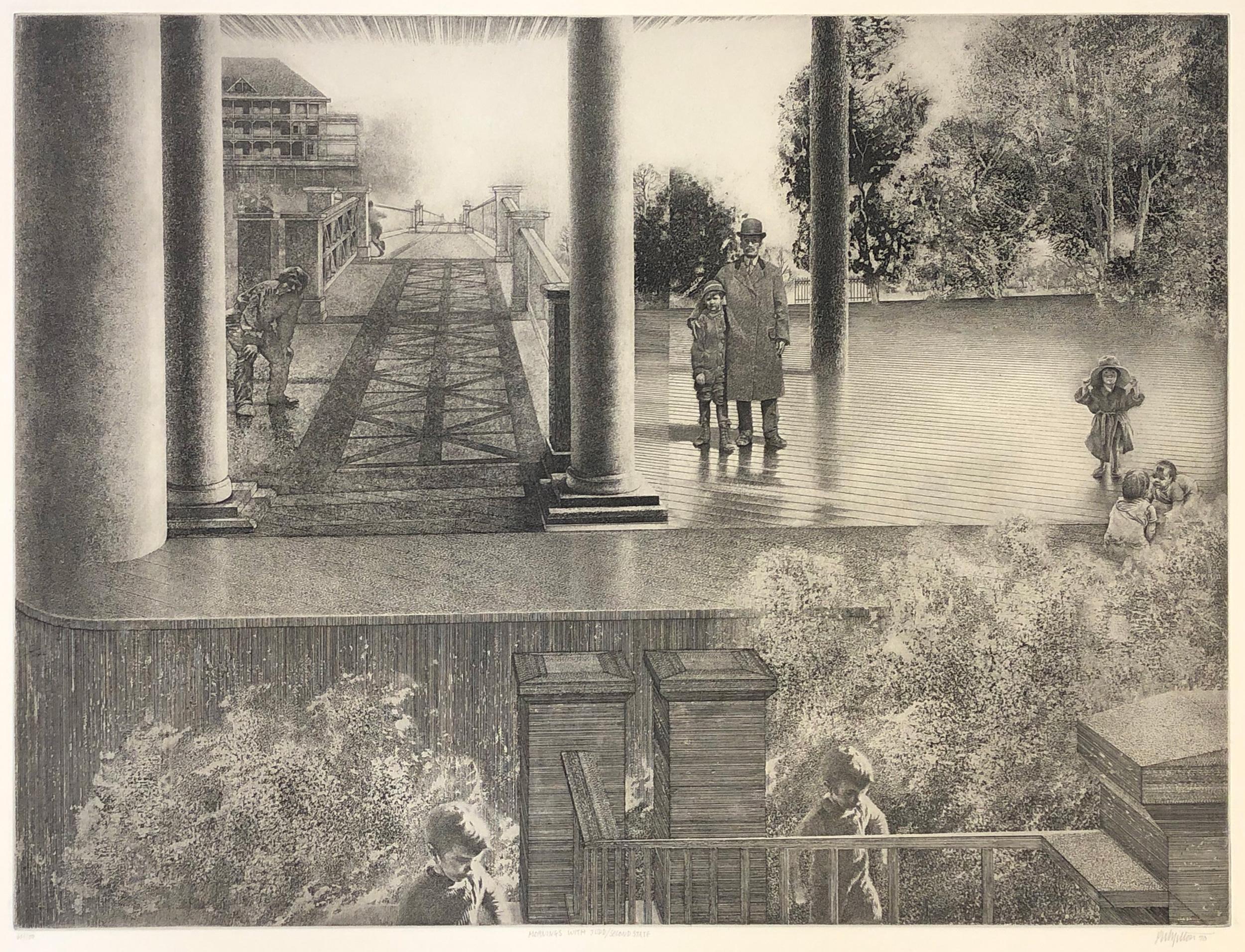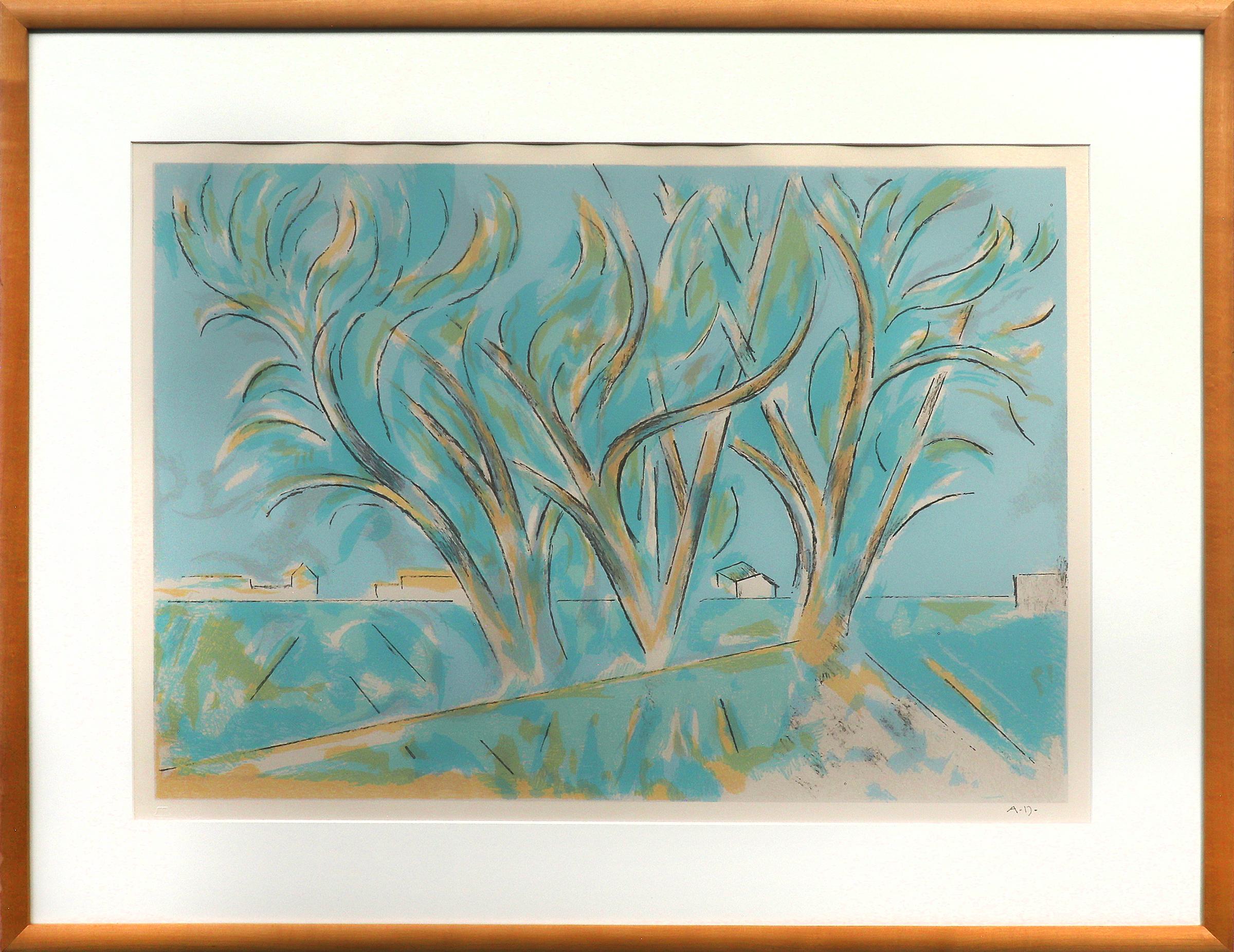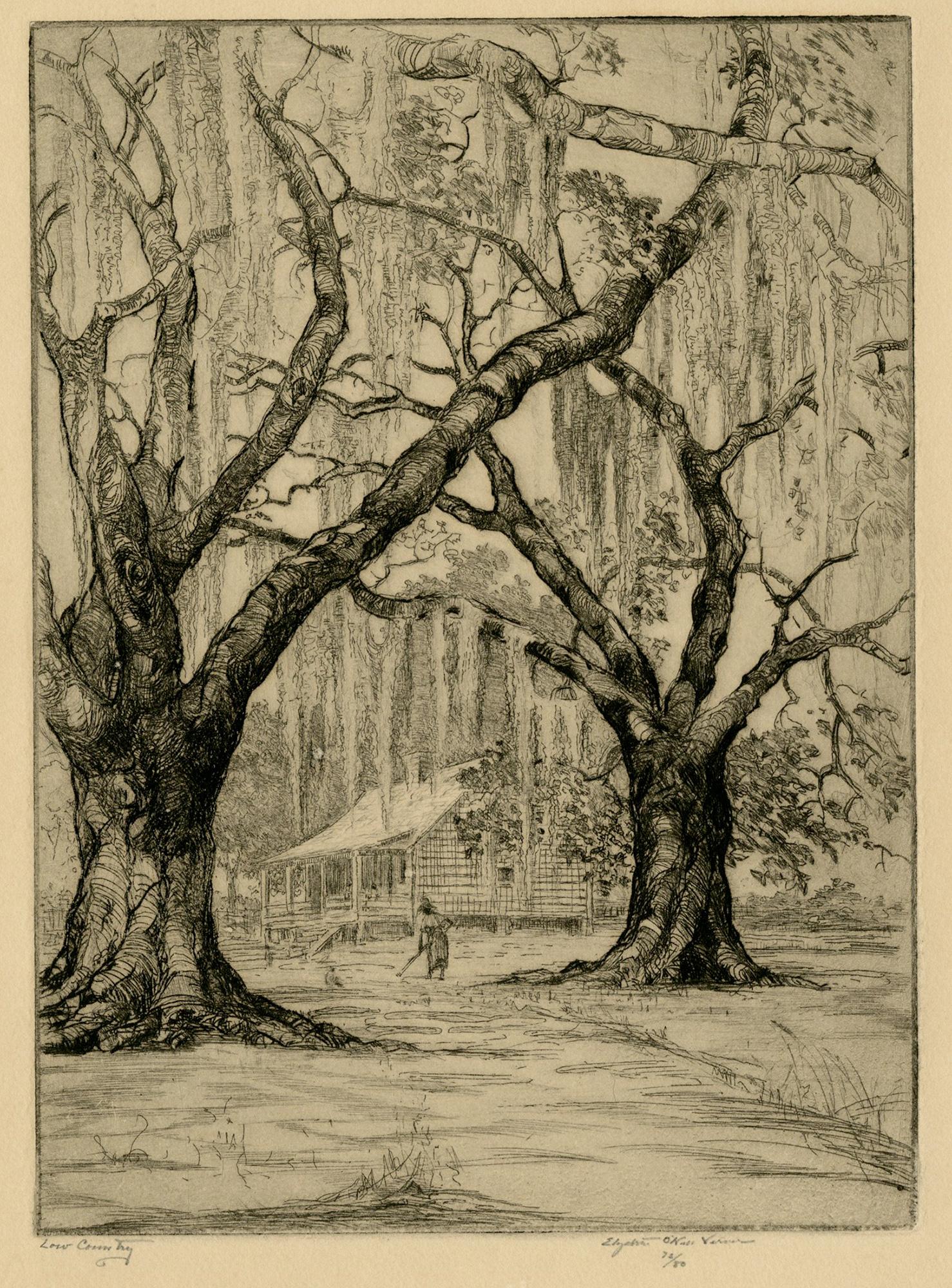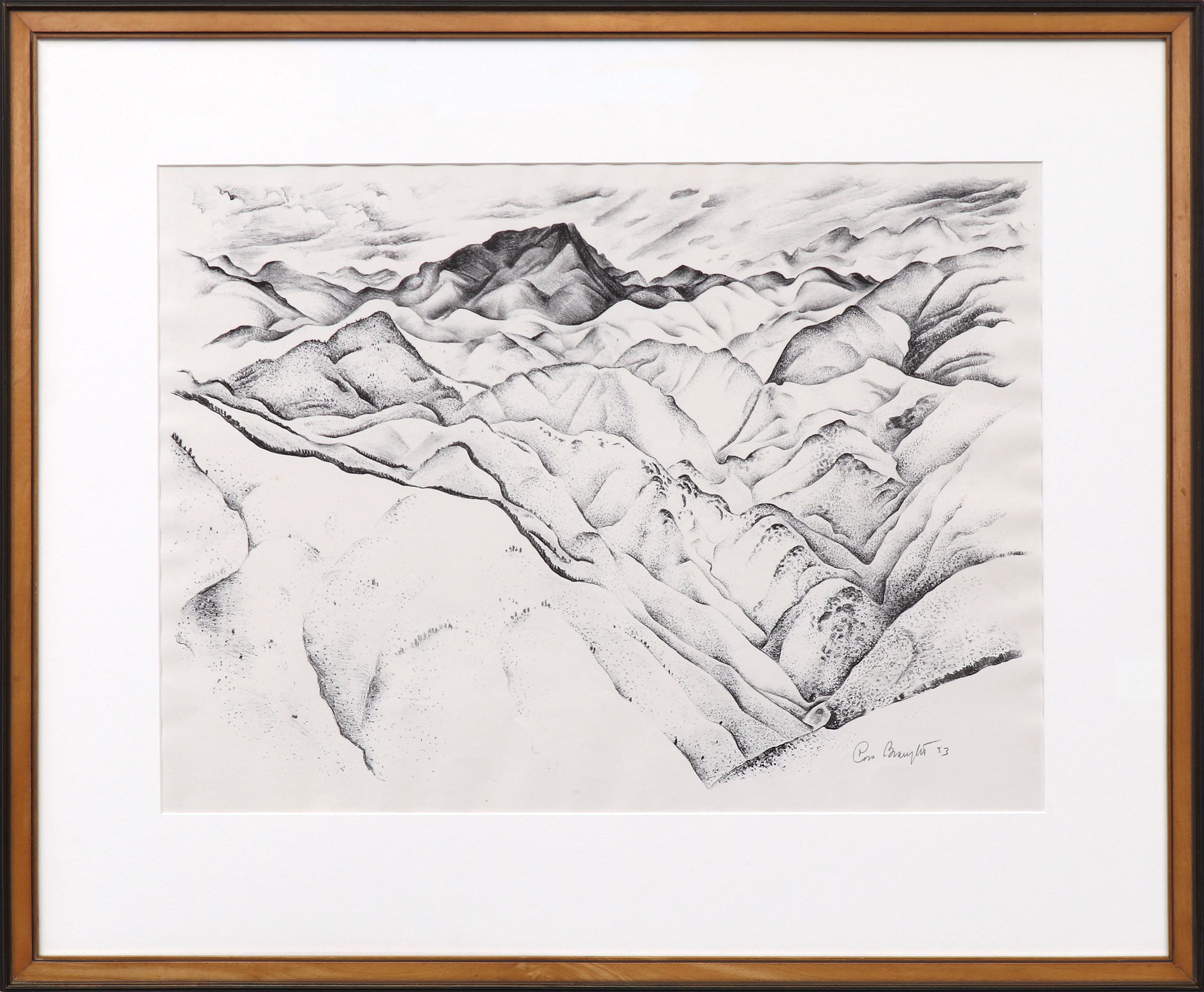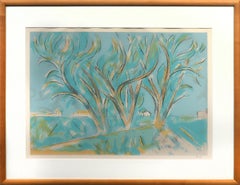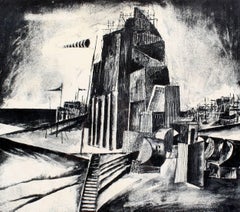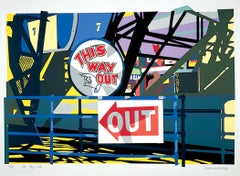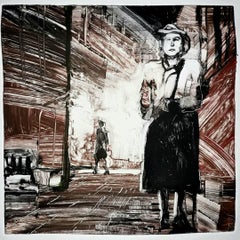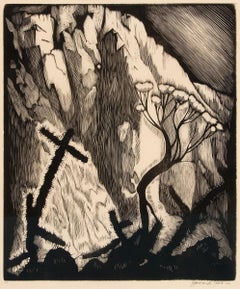
Sage and Cactus, Vintage 1927 Modernist New Mexico Landscape, Black & White
View Similar Items
Want more images or videos?
Request additional images or videos from the seller
1 of 11
Sage and Cactus, Vintage 1927 Modernist New Mexico Landscape, Black & White1927
1927
About the Item
- Creation Year:1927
- Dimensions:Height: 20 in (50.8 cm)Width: 17.5 in (44.45 cm)Depth: 0.75 in (1.91 cm)
- Medium:
- Movement & Style:
- Period:
- Condition:very good to excellent vintage condition, not examined outside of frame.
- Gallery Location:Denver, CO
- Reference Number:Seller: DCG-250771stDibs: LU2736807892
About the Seller
5.0
Platinum Seller
These expertly vetted sellers are 1stDibs' most experienced sellers and are rated highest by our customers.
Established in 1979
1stDibs seller since 2013
264 sales on 1stDibs
Typical response time: 5 hours
More From This SellerView All
- Trees in Ranchitos II, New Mexico, 1970s Color Lithograph Landscape with TreesBy Andrew Michael DasburgLocated in Denver, CO"Tree in Ranchitos II" (New Mexico) is a lithograph initialed lower right by artist Andrew Michael Dasburg (1887-1979) from 1975. Presented in a custom frame measuring 30 ½ x 36 ¼ inches. Image size is 16 ½ x 23 ¼ inches. About the Artist: Born France, 1887 Died New Mexico, 1979 Andrew Dasburg was born in Paris, but emigrated to New York City in 1892 with his mother. A childhood sickness left him lame, and his artistic propensities were first recognized by a teacher at the crippled children’s school. She enrolled him in the Art Students League in 1902. There he studied under Kenyon Cox, Frank Vincent Dumond, and Birge Harrison. Later, he began taking night classes from Robert Henri at the New York School of Art. Dasburg spent 1908-1910 in Paris, where he was introduced to the great impressionist painters Matisse and Cezanne. Inspired by the work of the European modernists, Dasburg returned to the United States, where he moved to Woodstock, New York. In Woodstock, he and his wife, Grace Mott Johnson, lived with Morgan Russell...Category
1970s American Modern Landscape Prints
MaterialsLithograph, Archival Paper
- 1930s Colorado Mountain Landscape Lithograph, Clear Creek Canyon by Ross BraughtBy Ross Eugene BraughtLocated in Denver, COOriginal lithograph by Ross Eugene Braught (1898-1983) titled 'Clear Creek Canyon I (Colorado)' from 1933. Pencil signed by the artist in the lower right margin. Presented in a custom frame with all archival materials measuring 26 ½ x 31 ½ inches, image size is 16 x 23 inches. Clear Creek rises near Loveland Pass...Category
1930s American Modern Landscape Prints
MaterialsArchival Paper, Pencil, Lithograph
- Silver Mine, Russell Gulch (12/25) Abstract Black and White Print in MountainsBy Arnold RönnebeckLocated in Denver, COLithograph on paper titled 'Silver Mine, Russell Gulch (12/25)' by Arnold Ronnebeck, which is a black and white lithograph print of an oil painting by him of the same name. It shows a mine with a mountain ridge in the background. Presented in a custom frame measuring 20 ½ x 26 ½ inches. Image size measures 10 ¼ x 14 ¼ inches. Print is clean and in very good vintage condition - please contact us for a detailed condition report. Provenance: Estate of Arnold Ronnebeck Expedited and international shipping is available - please contact us for a quote. About the Artist: Modernist sculptor, lithographer and museum administrator, Rönnebeck was a noted member of European and American avant-garde circles in the early twentieth century before settling in Denver, Colorado, in 1926. After studying architecture at the Royal Art School in Berlin for two years beginning in 1905, he moved to Paris in 1908 to study sculpture with Aristide Maillol and Émile-Antoine Bourdelle. While there he met and befriended American modernist painter, Marsden Hartley, of whom he sculpted a bronze head that was exhibited at the Salon d’Automne in Paris in 1912 and the following year at Hartley’s solo show of paintings at Alfred Stieglitz’s Gallery 291 in New York. A frequent guest of Gertrude Stein’s Saturday "evenings" in Paris, she described Rönnebeck as "charming and always invited to dinner," along with Pablo Picasso, Mabel Dodge (Luhan) and Charles Demuth. After the outbreak of World War I in 1914, Rönnebeck returned to Germany where he served as an officer in the German Imperial Army on the front lines. Twice wounded, including in the Battle of Marne in France, Kaiser Wilhelm II awarded him the Iron Cross. During the war Hartley fell in love with Rönnebeck’s cousin, Lieutenant Karl von Freyburg, who was killed in combat. As a tribute to Freyburg, Hartley created Portrait of a German Officer (1914) now in the Metropolitan Museum of Art in New York. After the war Rönnebeck traveled in Italy with German writer, Max Sidow, and German poet, Theodor Daubler, doing a series of drawings of Positano and the Amalfi Coast that formed the basis for his lithographs on the subject. The death of his finacée, the young American opera singer Alice Miriam in 1922 and his own family’s increasing financial problems in post-World War I Germany led him to immigrate to the United States in 1923. After living briefly with Miriam’s family in Washington, DC, he moved to New York where he became part of the avant-garde circle around Alfred Stieglitz. His essay, "Through the Eyes of a European Sculptor," appeared in the catalog for the Anderson Gallery exhibition, "Alfred Stieglitz Presents Seven Americans: 159 Paintings, Photographs & Things, Recent & Never Publicly Shown, by Arthur G. Dove, Marsden Hartley, John Marin, Charles Demuth, Paul Strand, Georgia O’Keeffe, Alfred Stieglitz." In New York Rönnebeck began producing Precisionist-style lithographs of the city’s urban landscapes which he termed "living cubism." Some of them were reproduced in Vanity Fair magazine. Through Stieglitz he met Erhard Weyhe head of the Weyhe Gallery who, with its director Carl Zigrosser, arranged Rönnebeck’s first solo American exhibition in May 1925 at the gallery in New York. Comprising some sixty works – prints, drawings and sculpture – the show subsequently traveled on a thirteen-month tour of major American cities. Until the end of his life, the gallery represented him, along with other American artists Adolf Dehn, Wanda Gag, Rockwell Kent, J.J. Lankes, Louis Lozowick, Reginald Marsh and John Sloan. In the summer of 1925, as the guest of Mabel Dodge Luhan, Rönnebeck first saw Taos, New Mexico, which Marsden Hartley had encouraged him to visit. It was there that he met his future wife, Louise Emerson, an easel painter and muralist. A year later they were married in New York before relocating to Denver. He served as director of the Denver Art Museum from 1926 to 1930 where he invited Marsden Hartley to lecture on Cézanne’s art in 1928. Rönnebeck fostered the development of the museum’s collection of American Indian art and the curation of modernist art exhibitions. In addition to his work at the museum, he was professor of sculpture at the University of Denver’s College of Fine and Applied Arts from 1929 to 1935, and wrote a weekly art column in the Rocky Mountain News. His best known Denver sculptures from the late 1920s in bronze, copper, stone, wood and terra cotta include a reredos, The Epiphany, at St. Martin’s Chapel; The History of Money (six panels) at the Denver National Bank; The Ascension at the Church of Ascension; and the William V. Hodges Family Memorial at Fairmount Cemetery. At the same time he did a series of terra cotta relief panels for La Fonda Hotel in Santa Fe, New Mexico. In the 1930s his bas-relief aluminum friezes of stylized Pueblo and Hopi Indian Kachina masks...Category
1930s American Modern Figurative Prints
MaterialsPaper, Lithograph
- Mine Near Continental Divide, Black White Colorado Mountain Landscape WinterBy Arnold RönnebeckLocated in Denver, COLithograph on paper titled 'Mine Near Continental Divide' by Arnold Ronnebeck (1885-1947) from 1933. Depicts a black and white winter scene of a mine in the mountains with snow on the rooftops and hillsides. Presented in a custom frame measuring 18 ¼ x 22 ¼ inches. Image size measures 10 ¼ x 14 ½ inches. Provenance: Estate of the Artist, Arnold Ronnebeck Expedited and international shipping is available - please contact us for a quote. About the Artist: Modernist sculptor, lithographer and museum administrator, Rönnebeck was a noted member of European and American avant-garde circles in the early twentieth century before settling in Denver, Colorado, in 1926. After studying architecture at the Royal Art School in Berlin for two years beginning in 1905, he moved to Paris in 1908 to study sculpture with Aristide Maillol and Émile-Antoine Bourdelle. While there he met and befriended American modernist painter, Marsden Hartley, of whom he sculpted a bronze head that was exhibited at the Salon d’Automne in Paris in 1912 and the following year at Hartley’s solo show of paintings at Alfred Stieglitz’s Gallery 291 in New York. A frequent guest of Gertrude Stein’s Saturday "evenings" in Paris, she described Rönnebeck as "charming and always invited to dinner," along with Pablo Picasso, Mabel Dodge (Luhan) and Charles Demuth. After the outbreak of World War I in 1914, Rönnebeck returned to Germany where he served as an officer in the German Imperial Army on the front lines. Twice wounded, including in the Battle of Marne in France, Kaiser Wilhelm II awarded him the Iron Cross. During the war Hartley fell in love with Rönnebeck’s cousin, Lieutenant Karl von Freyburg, who was killed in combat. As a tribute to Freyburg, Hartley created Portrait of a German Officer (1914) now in the Metropolitan Museum of Art in New York. After the war Rönnebeck traveled in Italy with German writer, Max Sidow, and German poet, Theodor Daubler, doing a series of drawings of Positano and the Amalfi Coast that formed the basis for his lithographs on the subject. The death of his finacée, the young American opera singer Alice Miriam in 1922 and his own family’s increasing financial problems in post-World War I Germany led him to immigrate to the United States in 1923. After living briefly with Miriam’s family in Washington, DC, he moved to New York where he became part of the avant-garde circle around Alfred Stieglitz. His essay, "Through the Eyes of a European Sculptor," appeared in the catalog for the Anderson Gallery exhibition, "Alfred Stieglitz Presents Seven Americans: 159 Paintings, Photographs & Things, Recent & Never Publicly Shown, by Arthur G. Dove, Marsden Hartley, John Marin, Charles Demuth, Paul Strand, Georgia O’Keeffe, Alfred Stieglitz." In New York Rönnebeck began producing Precisionist-style lithographs of the city’s urban landscapes which he termed "living cubism." Some of them were reproduced in Vanity Fair magazine. Through Stieglitz he met Erhard Weyhe head of the Weyhe Gallery who, with its director Carl Zigrosser, arranged Rönnebeck’s first solo American exhibition in May 1925 at the gallery in New York. Comprising some sixty works – prints, drawings and sculpture – the show subsequently traveled on a thirteen-month tour of major American cities. Until the end of his life, the gallery represented him, along with other American artists Adolf Dehn, Wanda Gag, Rockwell Kent, J.J. Lankes, Louis Lozowick, Reginald Marsh and John Sloan. In the summer of 1925, as the guest of Mabel Dodge Luhan, Rönnebeck first saw Taos, New Mexico, which Marsden Hartley had encouraged him to visit. It was there that he met his future wife, Louise Emerson, an easel painter and muralist. A year later they were married in New York before relocating to Denver. He served as director of the Denver Art Museum from 1926 to 1930 where he invited Marsden Hartley to lecture on Cézanne’s art in 1928. Rönnebeck fostered the development of the museum’s collection of American Indian art and the curation of modernist art exhibitions. In addition to his work at the museum, he was professor of sculpture at the University of Denver’s College of Fine and Applied Arts from 1929 to 1935, and wrote a weekly art column in the Rocky Mountain News. His best known Denver sculptures from the late 1920s in bronze, copper, stone, wood and terra cotta include a reredos, The Epiphany, at St. Martin’s Chapel; The History of Money (six panels) at the Denver National Bank; The Ascension at the Church of Ascension; and the William V. Hodges Family Memorial at Fairmount Cemetery. At the same time he did a series of terra cotta relief panels for La Fonda Hotel in Santa Fe, New Mexico. In the 1930s his bas-relief aluminum friezes of stylized Pueblo and Hopi Indian Kachina masks...Category
1930s American Modern Landscape Prints
MaterialsLithograph, Paper
- Colorado Gold Dredge, Breckenridge, Signed Black and White Mining LithographBy Arnold RönnebeckLocated in Denver, COLithograph on paper titled 'Colorado Gold Dredge, Breckenridge' by Arnold Ronnebeck (1885-1947) from 1932. Numbered 15/25. Depicted is a gold dredge in Colorado mining town Breckenridge with a mountain landscape in the background. Presented in a custom frame measuring 17 ¼ x 21 ¼ inches. Image size measures 10 ¼ x 14 ¼ inches. Print is clean and in very good vintage condition - please contact us for a detailed condition report. Provenance: Estate of Arnold Ronnebeck Expedited and international shipping is available - please contact us for a quote. About the Artist: Modernist sculptor, lithographer and museum administrator, Rönnebeck was a noted member of European and American avant-garde circles in the early twentieth century before settling in Denver, Colorado, in 1926. After studying architecture at the Royal Art School in Berlin for two years beginning in 1905, he moved to Paris in 1908 to study sculpture with Aristide Maillol and Émile-Antoine Bourdelle. While there he met and befriended American modernist painter, Marsden Hartley, of whom he sculpted a bronze head that was exhibited at the Salon d’Automne in Paris in 1912 and the following year at Hartley’s solo show of paintings at Alfred Stieglitz’s Gallery 291 in New York. A frequent guest of Gertrude Stein’s Saturday "evenings" in Paris, she described Rönnebeck as "charming and always invited to dinner," along with Pablo Picasso, Mabel Dodge (Luhan) and Charles Demuth. After the outbreak of World War I in 1914, Rönnebeck returned to Germany where he served as an officer in the German Imperial Army on the front lines. Twice wounded, including in the Battle of Marne in France, Kaiser Wilhelm II awarded him the Iron Cross. During the war Hartley fell in love with Rönnebeck’s cousin, Lieutenant Karl von Freyburg, who was killed in combat. As a tribute to Freyburg, Hartley created Portrait of a German Officer (1914) now in the Metropolitan Museum of Art in New York. After the war Rönnebeck traveled in Italy with German writer, Max Sidow, and German poet, Theodor Daubler, doing a series of drawings of Positano and the Amalfi Coast that formed the basis for his lithographs on the subject. The death of his finacée, the young American opera singer Alice Miriam in 1922 and his own family’s increasing financial problems in post-World War I Germany led him to immigrate to the United States in 1923. After living briefly with Miriam’s family in Washington, DC, he moved to New York where he became part of the avant-garde circle around Alfred Stieglitz. His essay, "Through the Eyes of a European Sculptor," appeared in the catalog for the Anderson Gallery exhibition, "Alfred Stieglitz Presents Seven Americans: 159 Paintings, Photographs & Things, Recent & Never Publicly Shown, by Arthur G. Dove, Marsden Hartley, John Marin, Charles Demuth, Paul Strand, Georgia O’Keeffe, Alfred Stieglitz." In New York Rönnebeck began producing Precisionist-style lithographs of the city’s urban landscapes which he termed "living cubism." Some of them were reproduced in Vanity Fair magazine. Through Stieglitz he met Erhard Weyhe head of the Weyhe Gallery who, with its director Carl Zigrosser, arranged Rönnebeck’s first solo American exhibition in May 1925 at the gallery in New York. Comprising some sixty works – prints, drawings and sculpture – the show subsequently traveled on a thirteen-month tour of major American cities. Until the end of his life, the gallery represented him, along with other American artists Adolf Dehn, Wanda Gag, Rockwell Kent, J.J. Lankes, Louis Lozowick, Reginald Marsh and John Sloan. In the summer of 1925, as the guest of Mabel Dodge Luhan, Rönnebeck first saw Taos, New Mexico, which Marsden Hartley had encouraged him to visit. It was there that he met his future wife, Louise Emerson, an easel painter and muralist. A year later they were married in New York before relocating to Denver. He served as director of the Denver Art Museum from 1926 to 1930 where he invited Marsden Hartley to lecture on Cézanne’s art in 1928. Rönnebeck fostered the development of the museum’s collection of American Indian art and the curation of modernist art exhibitions. In addition to his work at the museum, he was professor of sculpture at the University of Denver’s College of Fine and Applied Arts from 1929 to 1935, and wrote a weekly art column in the Rocky Mountain News. His best known Denver sculptures from the late 1920s in bronze, copper, stone, wood and terra cotta include a reredos, The Epiphany, at St. Martin’s Chapel; The History of Money (six panels) at the Denver National Bank; The Ascension at the Church of Ascension; and the William V. Hodges Family Memorial at Fairmount Cemetery. At the same time he did a series of terra cotta relief panels for La Fonda Hotel in Santa Fe, New Mexico. In the 1930s his bas-relief aluminum friezes of stylized Pueblo and Hopi Indian Kachina masks...Category
1930s American Modern Landscape Prints
MaterialsPaper, Lithograph
- House at Gregory Point (Colorado), 1930s Black and White Landscape LithographBy Arnold RönnebeckLocated in Denver, COOriginal Arnold Ronnebeck (1885-1947) lithograph of a home in Gregory Point, near Central City, Colorado from the 1930s. Edition of 25 printed. Presented in a custom frame, outer dimensions measure 23 ¼ x 18 ½ inches. Image size is 19 ¼ x 13 ¼ inches Print is clean and in very good vintage condition - please contact us for a detailed condition report. Provenance: Estate of Arnold Ronnebeck Expedited and international shipping is available - please contact us for a quote. About the Artist: Modernist sculptor, lithographer and museum administrator, Rönnebeck was a noted member of European and American avant-garde circles in the early twentieth century before settling in Denver, Colorado, in 1926. After studying architecture at the Royal Art School in Berlin for two years beginning in 1905, he moved to Paris in 1908 to study sculpture with Aristide Maillol and Émile-Antoine Bourdelle. While there he met and befriended American modernist painter, Marsden Hartley, of whom he sculpted a bronze head that was exhibited at the Salon d’Automne in Paris in 1912 and the following year at Hartley’s solo show of paintings at Alfred Stieglitz’s Gallery 291 in New York. A frequent guest of Gertrude Stein’s Saturday "evenings" in Paris, she described Rönnebeck as "charming and always invited to dinner," along with Pablo Picasso, Mabel Dodge (Luhan) and Charles Demuth. After the outbreak of World War I in 1914, Rönnebeck returned to Germany where he served as an officer in the German Imperial Army on the front lines. Twice wounded, including in the Battle of Marne in France, Kaiser Wilhelm II awarded him the Iron Cross. During the war Hartley fell in love with Rönnebeck’s cousin, Lieutenant Karl von Freyburg, who was killed in combat. As a tribute to Freyburg, Hartley created Portrait of a German Officer (1914) now in the Metropolitan Museum of Art in New York. After the war Rönnebeck traveled in Italy with German writer, Max Sidow, and German poet, Theodor Daubler, doing a series of drawings of Positano and the Amalfi Coast that formed the basis for his lithographs on the subject. The death of his finacée, the young American opera singer Alice Miriam in 1922 and his own family’s increasing financial problems in post-World War I Germany led him to immigrate to the United States in 1923. After living briefly with Miriam’s family in Washington, DC, he moved to New York where he became part of the avant-garde circle around Alfred Stieglitz. His essay, "Through the Eyes of a European Sculptor," appeared in the catalog for the Anderson Gallery exhibition, "Alfred Stieglitz Presents Seven Americans: 159 Paintings, Photographs & Things, Recent & Never Publicly Shown, by Arthur G. Dove, Marsden Hartley, John Marin, Charles Demuth, Paul Strand, Georgia O’Keeffe, Alfred Stieglitz." In New York Rönnebeck began producing Precisionist-style lithographs of the city’s urban landscapes which he termed "living cubism." Some of them were reproduced in Vanity Fair magazine. Through Stieglitz he met Erhard Weyhe head of the Weyhe Gallery who, with its director Carl Zigrosser, arranged Rönnebeck’s first solo American exhibition in May 1925 at the gallery in New York. Comprising some sixty works – prints, drawings and sculpture – the show subsequently traveled on a thirteen-month tour of major American cities. Until the end of his life, the gallery represented him, along with other American artists Adolf Dehn, Wanda Gag, Rockwell Kent, J.J. Lankes, Louis Lozowick, Reginald Marsh and John Sloan. In the summer of 1925, as the guest of Mabel Dodge Luhan, Rönnebeck first saw Taos, New Mexico, which Marsden Hartley had encouraged him to visit. It was there that he met his future wife, Louise Emerson, an easel painter and muralist. A year later they were married in New York before relocating to Denver. He served as director of the Denver Art Museum from 1926 to 1930 where he invited Marsden Hartley to lecture on Cézanne’s art in 1928. Rönnebeck fostered the development of the museum’s collection of American Indian art and the curation of modernist art exhibitions. In addition to his work at the museum, he was professor of sculpture at the University of Denver’s College of Fine and Applied Arts from 1929 to 1935, and wrote a weekly art column in the Rocky Mountain News. His best known Denver sculptures from the late 1920s in bronze, copper, stone, wood and terra cotta include a reredos, The Epiphany, at St. Martin’s Chapel; The History of Money (six panels) at the Denver National Bank; The Ascension at the Church of Ascension; and the William V. Hodges Family Memorial at Fairmount Cemetery. At the same time he did a series of terra cotta relief panels for La Fonda Hotel in Santa Fe, New Mexico. In the 1930s his bas-relief aluminum friezes of stylized Pueblo and Hopi Indian Kachina masks...Category
1930s American Modern Landscape Prints
MaterialsPaper, Lithograph
You May Also Like
- Modern American Industrial LandscapeLocated in Buffalo, NYAn original woodblock print dated 1965, titled "Our Town" but signed illegibly.Category
1960s American Modern Figurative Prints
MaterialsPaper, Woodcut
- This Way Out, colorful graphic amusement park with textBy Philomena MaranoLocated in Brooklyn, NYSilkscreen Edition of 125 + 1AP Philomena Marano has spent decades “penetrat[ing] the soul of Coney Island to reveal its twin promises of candy-colored paradise and garishly ornate nightmare,” as Ann Aptaker describes, through the prints and cut-paper collage in her “American Dream-land” series (1979-). These colorful, graphic style works evoke the energy and amusement of Coney Island through depictions of the rides, the boardwalk, clowns, and food vendors. Many are large-scale papier collé installations, a technique Marano learned from Robert Indiana in whose studio she formerly assisted. In conjunction with “American Dream Land,” in 1981 Marano and Richard Eagan co-founded the Coney Island Hysterical Society, which undertakes projects such as restoring old rides in response to the alarming rate at which they were shutting down in the fabled amusement park of their childhood. Ms. Marano is a daughter of Brooklyn. She holds a BFA from Pratt Institute, is an intimate of the visual poetry of Coney Island, created the winning poster for the first Spirit of Brooklyn poster...Category
2010s American Modern Prints and Multiples
MaterialsArchival Ink, Archival Paper
- Third Man 3, night, city scape, monochromatic, narrativeBy Tom BennettLocated in Brooklyn, NYDramatic imagery from FILM NOIR series of black and white monotypes, blending surrealistic mindscapes with stark realism About Tom Bennett: With quick brushstrokes, Tom Bennett crea...Category
2010s American Modern Figurative Drawings and Watercolors
MaterialsArchival Paper, Monotype
- New York Skyline, NY; East RiverBy Leon DoliceLocated in Middletown, NYEtching on medium stock, cream wove paper, 5 15/16 x 10 3/16 inches (151 x 259 mm), full margins. Signed and titled in pencil, lower margin. A fine and detailed impression in dark bl...Category
1930s American Modern Landscape Prints
MaterialsArchival Paper, Etching
- Les Belles et La Bête I: The RehearsalBy Peter MiltonLocated in Middletown, NYResist ground etching and engraving on Rives heavyweight buff paper, 20 x 36 inches (508 x 914 mm), full margins. Signed, titled, dated and numbered 103/160 in pencil, lower margin. Minor mat tone. A rich and finely printed impression of this complex and iconic work by Milton. Framed handsomely under Plexiglas with archival materials in a solid wood frame with silver finish. [Milton 98]. Milton states that in the evolution of his body of graphic work he found himself at point that necessitated the exertion of nerve in his subject matter. He found it imperative for growth to explore whether his compositions had previously been too polite, and through this process he experienced a great burst of artistic and psychic liberation. Milton refers to this awakening as a sort of adolescence, which he felt demanded a natural examination of mysteries of sexual awakening. Les Belles et La Bête...Category
1970s American Modern Interior Prints
MaterialsArchival Paper, Engraving, Etching
- Mornings with Judd (Second state)By Peter MiltonLocated in Middletown, NYLift ground and hard ground etching and engraving on Murillo white wove paper, 18 x 24 inches (455 x 608 mm), full margins. Signed, dated, titled and numbered 60/100 in pencil, lower margin. Printed and published by the artist. In very good condition with minor age tone and scattered light surface soiling on the verso. Framed handsomely in an original Kulicke welded aluminum frame with the embossed maker's mark. [Milton 61]. Milton revisited this image in 1974 during an experiment to explore collage and the process of contact printing a high resolution photo-transparency directly onto a copper plate. He printed a small detail transparency of Mornings with Judd onto the existing plate, alongside it's larger self, and broke through to a new photo-resist approach, which Milton described as "piquant and irresistible," in his essays appearing in Robert Flynn...Category
1970s American Modern Landscape Prints
MaterialsEngraving, Etching, Archival Paper

